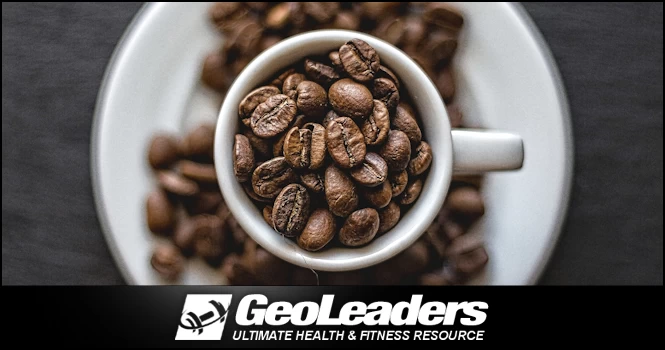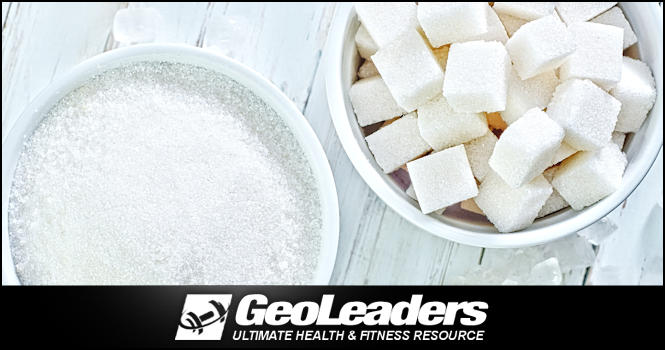Does caffeine boost your metabolism enough to burn fat and lose weight? Here’s what science says.

Have you ever sipped your morning coffee and wondered if there’s more to that invigorating feeling than just shaking off sleepiness?
Well, if you have then you’re in good company.
As millions around the world rely on their daily caffeine fix, a burning question emerges: Does caffeine truly boost metabolism?
In this nutrition guide, we’ll take a dive into the science behind caffeine’s potential metabolic-enhancing effects, explore its various sources, and even touch upon its calorie-burning capabilities.
So whether you’re an espresso enthusiast or a casual cappuccino sipper, this exploration promises insights that might just change the way you view your favorite caffeinated beverage.
So, grab your drink of choice, and let’s dive into the energizing world of caffeine and metabolism.
Understanding Caffeine And Metabolism
Every morning, millions reach for their coffee, seeking that jolt of energy to kickstart their day. But beyond the immediate wake-up call, could this daily ritual be secretly supercharging our metabolism?
Let’s unravel the intricate dance between caffeine and our body’s calorie-burning engine.
Definition of Metabolism and Its Importance
Metabolism is often mentioned in conversations about weight loss, energy, and overall health. But what exactly is it?
At its core, metabolism refers to the complex set of chemical reactions that occur within our bodies to maintain life.
These reactions are responsible for converting the food we eat into energy, which powers everything from our basic cellular functions to our daily activities.
The importance of metabolism cannot be overstated. It determines the rate at which our bodies burn calories, both at rest and during physical activity.
A faster metabolism means that the body is more efficient at burning calories, which can be beneficial for weight management and overall energy levels.
On the other hand, a slower metabolism might mean that calories are burned at a reduced rate, which can lead to weight gain if not balanced with physical activity.
Role of Caffeine in Boosting Metabolism
Now, where does caffeine fit into this metabolic puzzle? The question “Does caffeine boost metabolism?” has been a topic of interest for researchers and health enthusiasts alike.
Caffeine, a natural stimulant found in coffee, tea, and many energy drinks, has long been touted for its energy-boosting properties. But its potential impact on metabolism is what truly intrigues many.
Studies have shown that caffeine can temporarily increase the metabolic rate, leading to a spike in calorie burning.
This effect is primarily attributed to caffeine’s ability to stimulate the central nervous system, increase heart rate, and promote thermogenesis (the process by which the body produces heat).
Additionally, caffeine can enhance the oxidation of fatty acids, making it easier for the body to utilize fat as an energy source.
However, it’s essential to note that while caffeine can offer a short-term metabolic boost, its long-term effects on metabolism are still a subject of ongoing research.
Factors such as tolerance, dosage, and individual differences can influence how caffeine affects metabolism in different people.
SAVE 20% ON OUR #1 BEST SELLING FAT BURNER!
Overall Rating: ★★★★★ (9.8)
For a limited time only, use the code LETSGO at checkout and SAVE 20% on Phentramin-D – Our #1 Best-Selling Fat Burner For Over 9 Years!
How Caffeine Works in the Body
It’s the secret weapon in your morning brew, the spark that ignites your energy. But how exactly does caffeine weave its invigorating magic within our system? Dive in as we decode the intricate workings of this beloved stimulant.
Caffeine as a Stimulant: The Body’s Natural Alarm Clock
When the morning fog sets in, and our eyelids feel like they’re made of lead, many of us instinctively reach for a cup of coffee. The ritual of drinking coffee or tea has become a morning staple for countless individuals worldwide.
But what is it about caffeine that gives us that much-needed jolt of energy? The answer lies in its nature as a stimulant.
- Mechanism of Action: Caffeine, at its essence, is a central nervous system stimulant. When consumed, it doesn’t just give you a feeling of wakefulness; it actively combats the sensations of tiredness at a molecular level.
- Blocking Adenosine Receptors: One of the primary ways caffeine achieves this is by blocking adenosine receptors in the brain. Adenosine is a neurotransmitter that promotes relaxation and sleepiness. When its receptors are blocked by caffeine, the result is a delay in the onset of fatigue and an increase in alertness.
- Increase in Neuronal Activity: With adenosine receptors blocked, there’s a surge in neuronal activity in the brain. This uptick signals the pituitary gland to produce more of the hormone adrenaline, further contributing to caffeine’s stimulating effects.
- Release of Neurotransmitters: Caffeine also stimulates the release of certain neurotransmitters like dopamine and norepinephrine. These play crucial roles in mood regulation, attention, and overall energy levels, explaining why that first sip of coffee can feel so invigorating.
Caffeine’s Natural Reservoirs: From Beans to Bars
While most associate caffeine with coffee, it’s found in a variety of sources. Tea leaves, energy drinks, and even chocolate contain varying amounts of this stimulant, offering multiple avenues for that much-needed energy boost.
Coffee: The Global Morning Ritual
Coffee, derived from the roasted seeds of the Coffea plant, is arguably the most recognized source of caffeine.
- Origins and Spread: Legend has it that coffee was discovered by an Ethiopian goat herder named Kaldi. Noticing his goats dancing energetically after consuming berries from a particular tree, Kaldi decided to try them himself. Today, coffee is a global phenomenon, with variations like Italian espresso, Turkish coffee, and Americano enjoyed worldwide.
- Caffeine Content: A standard 8-ounce cup of coffee contains about 95 mg of caffeine, but this can vary based on factors like the type of coffee bean, roast level, and brewing method. For instance, espresso, despite its smaller serving size, packs a more concentrated caffeine punch than a regular drip coffee.
Tea Leaves: A Gentle Lift
Tea, made from the leaves of the Camellia sinensis plant, is another major source of caffeine, though it generally contains less than coffee.
- Varieties and Caffeine Levels: From green to black, oolong to white, the processing of tea leaves results in different types of tea, each with its unique flavor and caffeine content. For example, black tea typically has more caffeine than green tea, with amounts ranging from 40-70 mg per 8-ounce cup.
- Cultural Significance: Tea ceremonies in Japan, afternoon tea in England, or the ubiquitous chai of India – tea is deeply woven into the cultural fabric of many societies, offering both a source of caffeine and a moment of reflection or social connection.
Energy Drinks: The Modern Jolt
Energy drinks, a relatively recent addition to the caffeine landscape, offer a potent mix of caffeine, sugar, and other stimulants.
- Composition and Appeal: Beyond caffeine, many energy drinks contain ingredients like taurine, guarana, and B-vitamins. Marketed towards younger demographics, they promise enhanced alertness, improved athletic performance, and prolonged endurance.
- Caffeine Levels: These drinks can vary widely in their caffeine content, with some packing as much as 200 mg or more in a single can. Given their potency, it’s crucial to consume them in moderation and be aware of potential side effects.
Chocolate: The Sweet Stimulant
Chocolate, derived from the cacao bean, is a delightful source of caffeine, though in much smaller amounts than coffee or tea.
- From Bean to Bar: The cacao tree produces pods, which contain cacao beans. These beans undergo a process of fermentation, drying, roasting, and grinding to produce chocolate. Dark chocolate typically contains more caffeine than milk chocolate.
- Caffeine Content: A standard 1-ounce serving of dark chocolate might contain between 5-20 mg of caffeine, while milk chocolate contains even less. So, while you might get a mild energy boost from your chocolate dessert, it’s more of a gentle lift than a jolt.
Mobilization of Fat From Adipose Tissue
Ever wondered if your daily caffeine fix could be doing more than just waking you up? As it turns out, caffeine might be playing a behind-the-scenes role in fat mobilization.
While there are various methods to kickstart our body’s fat-burning processes, incorporating caffeine into your diet may just be one of the best ways to boost your metabolism.
Its multifaceted interaction with fat cells showcases its potential in aiding fat mobilization.”
Let’s delve into the science of how caffeine interacts with our fat cells and potentially aids in fat loss.
Caffeine’s Impact on Fat Cells: More Than Just an Energy Boost
Caffeine’s reputation as an energy booster is well-known, but its influence extends far beyond keeping us awake. Within the intricate network of our body’s cells, caffeine plays a fascinating role, especially concerning fat cells.
When consumed, caffeine doesn’t just stop at providing a temporary energy surge; it actively interacts with our adipose tissue, potentially aiding in the breakdown and utilization of stored fats. This interaction is a multi-step process, involving various physiological responses that collectively contribute to how our body manages and uses fat.
From activating the nervous system to enhancing thermogenesis, caffeine’s impact on fat cells not only helps to burn fat but is also a testament to its multifaceted nature.
- Activation of the Nervous System: When caffeine enters the bloodstream, one of its primary actions is to stimulate the central nervous system. This activation sets off a chain of events that can influence fat cells directly and indirectly.
- Role of Epinephrine (Adrenaline): As a result of the nervous system’s activation, there’s an increase in the release of epinephrine, commonly known as adrenaline. This hormone plays a pivotal role in signaling fat cells to release stored fat.
- Signaling Fat Cells to Break Down Fats: Epinephrine binds to receptors on fat cells, signaling them to break down triglycerides (stored fats) into free fatty acids and glycerol. These components are then released into the bloodstream, making them available as energy sources.
- Increased Thermogenesis: One of the intriguing effects of caffeine is its ability to increase thermogenesis, the process by which our bodies produce heat. This increase in metabolic heat production can lead to more calories being burned, further promoting the breakdown of fat.
- Enhanced Fat Oxidation: With more fatty acids available in the bloodstream, there’s an uptick in fat oxidation. This process refers to the burning of these fatty acids to produce energy, a crucial step in reducing stored body fat.
Negative Energy Balance and Fat Loss: The Caloric Equation
The concept of weight loss, or the goal to lose weight, often boils down to a simple equation: burn more calories than you consume. This state, known as a negative energy balance, is crucial for fat loss.
Caffeine can play a supportive role in this equation. By potentially increasing the rate at which our body burns calories and promoting the release of stored fats, caffeine can tilt the balance in favor of fat loss. However, it’s essential to remember that caffeine alone isn’t a silver bullet.
Achieving a negative energy balance requires a holistic approach, encompassing diet, physical activity, and lifestyle choices. Caffeine can be a valuable tool in this journey, but it works best when paired with other strategies that collectively create the optimal environment for fat loss.
- Releasing Fatty Acids into Bloodstream: As caffeine stimulates the release of fatty acids, these molecules enter the bloodstream, ready to be utilized by muscles and other tissues. This provides an immediate source of energy, especially during physical activity.
- Importance of Caloric Expenditure: For fat loss to occur, there needs to be a negative energy balance, where the calories burned exceed the calories consumed. Caffeine can aid in this by increasing metabolic rate and promoting fat oxidation, but it’s essential to pair it with proper diet and exercise.
- Complementary Strategies for Fat Loss: While caffeine can be a valuable ally in the quest for fat loss, it’s just one piece of the puzzle. Incorporating a balanced diet, regular exercise, and other metabolic boosters can amplify the effects of caffeine and lead to more sustainable fat loss results.
Increasing Resting Metabolic Rate (RMR)
The quest for weight loss often leads to a deeper understanding of our body’s metabolic processes. One term that frequently emerges in this context is the Resting Metabolic Rate (RMR). But how does our daily caffeine intake influence this crucial rate? Let’s dive deep and uncover the relationship between caffeine and RMR.
Understanding Resting Metabolic Rate
Resting Metabolic Rate, often abbreviated as RMR, is a cornerstone in the realm of metabolism. It’s the energy our body requires when at complete rest, powering essential functions like breathing, circulation, and cell maintenance.
RMR refers to the number of calories our body burns at rest. It’s the energy required to sustain vital functions like breathing, circulation, and cell production. Understanding one’s RMR can provide valuable insights into weight management and overall metabolic health.
Influence of Caffeine on RMR
Caffeine, a beloved component in our daily brews and energy drinks, has been shown to have a tangible impact on RMR. But how exactly does it enhance our body’s resting calorie-burning capabilities?
- Studies Demonstrating RMR Increase: Research indicates that caffeine can lead to a temporary increase in RMR. Several studies have shown a rise in RMR by 3-11% after caffeine consumption, emphasizing its potential role in weight management.
- Impact of Different Doses of Caffeine: Not all caffeine doses are created equal. While a moderate dose can elevate RMR, excessive amounts might not offer added benefits. It’s crucial to strike a balance to maximize caffeine’s metabolic advantages.
- Emphasis on Fat Burning: Beyond just boosting RMR, caffeine also promotes fat oxidation. This means that post-caffeine consumption, the body tends to utilize more fat as an energy source, further aiding weight loss endeavors.
Variations in Effectiveness
While caffeine’s influence on RMR is evident, its effectiveness can vary based on individual factors.
- Effects on Lean vs. Obese Individuals: Lean individuals might experience a more pronounced RMR boost post-caffeine consumption compared to their obese counterparts. This highlights the intricate interplay between body composition and metabolic responses.
- Age-Related Differences: Younger individuals might see a more significant RMR increase from caffeine than older adults. This age-related difference underscores the evolving nature of our metabolism and how external factors like caffeine interact with it.
Caffeine and Long-Term Weight Loss
While caffeine’s immediate effects on metabolism and energy are well-documented, its role in long-term weight loss is a topic of intrigue and debate. Can your daily cup of coffee or tea truly make a difference in your weight loss journey over time? Let’s explore the deeper, lasting impacts of caffeine on weight management.
Development of Tolerance to Caffeine
Caffeine, as with many stimulants, presents a unique challenge: the development of tolerance. Over time, regular consumers might find that the effects they once felt strongly begin to wane.
Initially, caffeine can significantly boost metabolic rate, promote fat oxidation, and even suppress appetite. However, with consistent intake, the body can become accustomed to its presence, leading to reduced responsiveness. This means that over time, the pronounced metabolic benefits of caffeine might diminish as the body builds tolerance.
Appetite Regulation and Caffeine
Another fascinating aspect of caffeine’s interaction with our body is its potential role in appetite regulation. Could caffeine be the secret to feeling fuller for longer?
- Appetite-Reducing Effects: Several studies have indicated that caffeine can temporarily suppress appetite, leading to reduced calorie intake in subsequent meals. This effect can be particularly beneficial for those looking to create a calorie deficit for weight loss. However, the extent and duration of this appetite-suppressing effect can vary among individuals.
- Gender Differences in Appetite Response: Interestingly, research suggests that men and women might respond differently to caffeine’s appetite-regulating effects. Some studies have shown that men experience a more pronounced decrease in hunger after caffeine consumption, while women might notice a reduction in their desire to eat for a more extended period.
Individual Variation in Long-Term Effects
The long-term effects of caffeine on weight loss aren’t one-size-fits-all. Several factors can influence how caffeine impacts weight management over extended periods.
- Lack of Concrete Evidence: While there’s ample evidence showcasing caffeine’s short-term metabolic benefits, long-term studies offer mixed results. Some individuals maintain a consistent metabolic boost and appetite suppression over time, while others might not see these benefits due to factors like tolerance development.
- Genetic Factors Influencing Caffeine Metabolism: Our genes play a role in how we metabolize and respond to caffeine. Some people are naturally “fast metabolizers” of caffeine, experiencing its benefits (and potential side effects) more intensely and quickly. In contrast, “slow metabolizers” might have prolonged but less pronounced effects. This genetic variation can influence the long-term weight loss benefits one might derive from caffeine.
Incorporating the SEO elements, this section delves into the complexities of caffeine’s role in long-term weight management, highlighting the nuances and individual variations that come into play.
Caffeine’s Role in Enhancing Exercise Performance
For many, drinking coffee or having a caffeinated beverage is the go-to pick-me-up before hitting the gym or pounding the pavement. But beyond the initial energy surge, how does caffeine truly influence our exercise capabilities? As we dive into the world of sports science, we’ll uncover the multifaceted role of caffeine in boosting athletic performance.
Overview of Caffeine as a Performance Enhancer
Caffeine’s reputation extends beyond the realm of morning rituals and study sessions. In the athletic world, it’s hailed as a potent performance enhancer. Its ability to reduce perceived effort, increase alertness, and delay fatigue makes it a favorite among athletes, from weekend warriors to elite professionals.
Benefits of Caffeine for Exercise
The allure of caffeine in the fitness community isn’t just based on anecdotal evidence. Scientific studies have delved into its potential benefits, revealing a range of positive impacts on various aspects of exercise.
- Muscle Endurance and Strength: Caffeine has been shown to enhance muscle contraction and delay the onset of muscle fatigue. This means that with caffeine, athletes might be able to lift heavier weights or perform repetitive tasks for longer durations, enhancing both muscle endurance and strength.
- Anaerobic and Aerobic Power: For high-intensity, short-duration activities (anaerobic) like sprinting, caffeine can provide a significant boost. Additionally, for longer, sustained activities (aerobic) like distance running or cycling, caffeine can enhance endurance and reduce perceived effort, allowing athletes to push harder and longer.
Factors Influencing Caffeine’s Impact on Exercise
Caffeine has long been recognized for its ability to enhance exercise performance. However, it’s not a one-size-fits-all solution. The way caffeine affects one person during exercise can be vastly different from another.
Let’s take a look at these differences and explore the factors that determine how caffeine influences exercise performance.
1. Genetics: The DNA Blueprint
Our genes play a significant role in determining how we metabolize and respond to caffeine. For instance:
- Fast vs. Slow Metabolizers: Some people have a genetic makeup that allows them to metabolize caffeine quickly, while others process it more slowly. Fast metabolizers can experience the benefits of caffeine—like increased alertness and reduced perception of effort—sooner and may find it more effective during short, high-intensity workouts. In contrast, slow metabolizers might experience prolonged effects, which can be beneficial for endurance activities but also come with a higher risk of side effects like jitters or insomnia.
- Sensitivity to Caffeine: Some individuals are genetically more sensitive to caffeine. Even a small amount can lead to significant performance enhancement for them, while others might need a larger dose to experience the same effects.
2. Tolerance: The Habitual Coffee Drinker’s Dilemma
Just like with many substances, regular consumption of caffeine can lead to increased tolerance. This means:
- Regular vs. Occasional Consumers: If you drink coffee daily, you might find that over time, you need more of it to achieve the same performance-enhancing effects during exercise. On the other hand, occasional consumers or those who cycle their caffeine intake might experience more pronounced benefits from a smaller amount.
- Resetting Tolerance: Some athletes strategically reduce or eliminate caffeine intake for a few days or weeks leading up to a major competition. This “caffeine detox” can reset their tolerance, allowing them to experience the full benefits on the day of the event.
3. Type of Sport: Not All Exercises Are Created Equal
The nature of the sport or exercise can determine how beneficial caffeine is for performance:
- Endurance vs. Sprint: Caffeine is especially beneficial for endurance sports like long-distance running or cycling, where it can help athletes maintain a steady pace and delay the onset of fatigue. For sprinters or those involved in short, explosive activities, caffeine can enhance power output and reaction time.
- Skill-Based Sports: In sports that require precision, like golf or archery, caffeine might help improve focus and concentration. However, too much can lead to jitters, potentially affecting performance negatively.
- Team Sports: Athletes in team sports like soccer or basketball might benefit from caffeine’s ability to improve reaction time, decision-making, and even team coordination.
While caffeine can undoubtedly be a powerful ally for many athletes, it’s essential to understand and respect its nuances. By considering factors like genetics, tolerance, and the specific demands of a sport, athletes can optimize their caffeine consumption for maximum performance benefits.
Timing and Dosage of Caffeine for Performance
To harness the full potential of caffeine’s performance-enhancing properties, it’s crucial to consider both the dosage and timing of consumption.
- Optimal Dosage for Exercise Enhancement: While the optimal dosage can vary based on individual factors, research suggests that a moderate dose (3-6 mg/kg of body weight) is effective in enhancing exercise performance without causing adverse side effects.
- Best Time to Consume Caffeine: For maximum benefits, it’s recommended to consume caffeine about 30-60 minutes before exercise. This window allows caffeine to reach peak levels in the bloodstream, ensuring that its effects align with the workout’s start.
- Considerations for Various Forms of Caffeine Supplements: While many athletes opt for a pre-workout coffee, others turn to caffeine pills, gels, or gum. Each form has its absorption rate, so it’s essential to understand how quickly they take effect and adjust the timing accordingly.
Optimizing Caffeine Consumption for Fat Loss
When it comes to weight loss, every little bit helps, and caffeine often emerges as a secret weapon in this battle. But how can one optimize caffeine consumption to maximize its fat-burning potential? Let’s explore strategies to harness caffeine’s power while considering its broader health benefits.
Cycling Caffeine Drinking Habits
Consistent caffeine consumption can be a double-edged sword. While it offers immediate benefits, over time, the body can become accustomed to its effects, diminishing its fat-burning potential. This is where the concept of “cycling” caffeine consumption comes into play.
- Preventing Tolerance Buildup: Regular caffeine drinkers often notice that over time, they need more of it to achieve the same effects. This is due to tolerance buildup. By strategically cycling caffeine intake, one can prevent this tolerance, ensuring that caffeine remains an effective tool in their weight loss arsenal.
- Two Weeks On, Two Weeks Off Approach: One popular method among fitness enthusiasts is the “two weeks on, two weeks off” approach. By consuming caffeine regularly for two weeks and then taking a two-week break, individuals can reset their caffeine sensitivity. This ensures that when they reintroduce caffeine, its metabolic and fat-burning effects are more pronounced.
Other Benefits of Caffeinated Beverage Consumption
While caffeine’s metabolic effects are often the spotlight, caffeinated beverages, especially coffee and tea, come with a host of other health benefits.
- Antioxidant Content: Nature’s Protective Shield: Coffee and tea are rich in antioxidants, compounds that combat oxidative stress in the body. These antioxidants can protect against cellular damage, reduce inflammation, and even lower the risk of certain chronic diseases. For those consuming caffeine for weight loss, this added antioxidant boost is a welcome bonus.
- Additional Health Considerations: Beyond antioxidants, regular coffee and tea consumption has been linked to a reduced risk of several health conditions, including type 2 diabetes, Parkinson’s disease, and certain types of cancer. However, it’s essential to consume them in moderation and be mindful of added sugars and creams that can counteract their health benefits.
Is The Metabolic Boost Temporary?
Like most foods that boost metabolism, the caffeine-induced metabolism boost is always going to be a temporary effect.
This means that the caffeine will not affect your long-term energy expenditure any longer than it is in your system.
You will have to take a supplement or drink consistently to get the most metabolism-boosting effects for long-term weight loss.
What Type Of Caffeine Is Best?
It’s important to look at how the weight loss industry gets its caffeine.
Caffeine is naturally found in coffee beans, but for mass production of supplements, Caffeine Anhydrous (1,3,7 Trimethylxanthine) is more commonly used.
This synthetic form of caffeine is most often added to metabolism-producing products including weight loss pills, energy drinks, caffeine pills, and even caffeine-rich candies.
The reason is that it can be manufactured consistently, unlike natural sources such as the caffeine you get from a cup of coffee.
Coffee will vary in the amount of caffeine it contains so you can never be sure as to how much caffeine you are getting.
Caffeine Dosage To Lose Weight
If caffeine consumption makes you feel more awake and active, it may naturally lead to the assumption that caffeine intake will also help with your weight loss efforts.
Caffeine has been shown to assist with a short-term boost in metabolism because caffeine increases energy expenditure by increasing thermogenesis (heat production) which increases fat oxidation.
In other words, caffeine might help you be more active and burn more calories, but this effect is congruent with the caffeine dosage. This means more caffeine equals more calories being burned.
Studies have shown that every time the dosage of caffeine doubled, it increased a reduction in weight, BMI, and fat mass [1].
It must be noted that caffeine may also produce some side effects including increased anxiety, increased blood pressure, and an irregular heartbeat.
So as caffeine consumption increases so do these side effects, which is why it is important to be aware of what a safe dosage is.
What Is A Safe Caffeine Dosage?
Many companies use caffeine as an additive in their “diet pills” because caffeine is known to increase metabolism. However; this metabolism-boosting effect can be short-term due to tolerance.
In this case, caffeine dosage may need to increase to assist with weight loss over the long term. so it’s important to know what a safe dosage of caffeine is to avoid side effects.
According to the Mayo Clinic, most healthy adults can safely take a dosage of up to 400 milligrams (mg) of caffeine per day. That equals around four cups of coffee, 10 cans of diet soda, two energy drinks, or two doses of metabolism-boosting pills [2].
Frequently Asked Questions (FAQs) About Caffeine and Metabolism
When it comes to caffeine’s role in metabolism, fat loss, and exercise performance, many questions arise. Below, we’ve compiled a list of frequently asked questions to provide clear, concise, and expert-backed answers on this intriguing topic.
Q. How does caffeine affect metabolism?
Caffeine stimulates the central nervous system, leading to an increase in metabolic rate, effectively helping to increase metabolism over short periods.
Q. Can caffeine really help with fat loss?
Yes, caffeine can aid in fat loss by promoting the breakdown of stored fats and increasing thermogenesis, the process by which the body produces heat. However, its effectiveness can vary based on individual factors and tolerance.
Q. What is the relationship between caffeine and resting metabolic rate?
Caffeine can temporarily increase the resting metabolic rate (RMR), which is essentially the number of calories the body burns at rest, similar to our basal metabolic rate (BMR). An elevated RMR or BMR means the body is burning more calories, even when inactive, potentially supporting weight loss.
Q. Does tolerance to caffeine impact its fat-burning effects?
Yes, regular caffeine consumption can lead to tolerance, reducing its metabolic and fat-burning effects over time. Cycling caffeine intake can help mitigate this tolerance buildup.
Q. Are there differences in how caffeine affects men’s and women’s appetites?
Research suggests that caffeine might suppress appetite differently in men and women. Some studies indicate that men might experience a more pronounced decrease in hunger, while women may see a prolonged reduction in their desire to eat.
Q. Is cycling coffee consumption necessary for maximizing fat loss?
Cycling coffee consumption can help prevent tolerance buildup, ensuring that caffeine remains effective in boosting metabolism and promoting fat loss. A common approach is the “two weeks on, two weeks off” method.
Q. How fast does caffeine boost metabolism?
Upon consumption, caffeine quickly gets absorbed into the bloodstream and reaches peak levels within 30 minutes to 2 hours. During this time, its metabolic effects, such as increased calorie burning and enhanced fat oxidation, start to manifest. However, the most pronounced metabolic boost is typically observed within the first few hours after caffeine intake.
Q. How much caffeine per day for weight loss?
The optimal amount of caffeine for weight loss can vary based on individual tolerance and factors like age, weight, and genetics. However, most studies suggest a dosage range of 100-400 mg per day to be effective for metabolic enhancement. It’s essential to start with a lower dose and monitor for any adverse effects, gradually increasing if well-tolerated. Always consult with a healthcare professional before making significant changes to caffeine consumption.
Q. Does caffeine speed up digestion?
Yes, caffeine can stimulate the muscles in the digestive tract, leading to increased motility and potentially faster digestion. This effect is particularly noticeable in the colon, which is why some people may feel the need to visit the bathroom shortly after consuming caffeinated beverages. However, it’s worth noting that excessive caffeine can lead to digestive issues like diarrhea or stomach upset in some individuals.
Q. What are some other health benefits of coffee consumption?
Beyond metabolism, coffee is rich in antioxidants that combat oxidative stress. Regular coffee consumption has also been linked to a reduced risk of several health conditions, including type 2 diabetes, Parkinson’s disease, and certain cancers.
Q. Can caffeine supplements provide similar effects to coffee?
Caffeine supplements can offer similar metabolic benefits as coffee. However, they lack other beneficial compounds found in coffee, like antioxidants. It’s also essential to monitor dosage with supplements to avoid excessive intake.
Q. How does age influence the impact of caffeine on metabolism?
Age can affect how the body responds to caffeine. Younger individuals might experience a more significant metabolic boost from caffeine compared to older adults, due to factors like hormonal levels and muscle mass.
Q. Are there any risks or side effects associated with high caffeine intake?
Excessive caffeine intake can lead to side effects like insomnia, jitters, increased heart rate, and digestive issues. It’s crucial to consume caffeine in moderation and be aware of individual tolerance levels.
Q. How does caffeine impact exercise performance?
One study found that caffeine can enhance exercise performance by reducing perceived effort, increasing alertness, and delaying fatigue, highlighting its potential benefits for athletes and fitness enthusiasts. It’s particularly beneficial for high-intensity activities and endurance sports.
Q. What is the best time to consume caffeine for optimal exercise benefits?
For maximum exercise benefits, it’s recommended to consume caffeine about 30-60 minutes before the activity. This timing ensures peak blood caffeine levels align with the workout’s start.
Q. Are there particular dosages or forms of caffeine that are best for exercise enhancement?
A moderate dose of caffeine (3-6 mg/kg of body weight) is typically effective for exercise enhancement. While coffee is a popular source, athletes also use caffeine pills, gels, or gum, each with its absorption rate and timing considerations.
Final Thoughts on Caffeine And Metabolism
From our morning brew to the supplements we might take before a workout, caffeine is an integral part of many of our lives.
In this article, we’ve delved deep into the science behind caffeine, exploring its multifaceted relationship with our metabolism and its potential role in weight management.
The Heart of the Matter: Caffeine’s Complex Role
The world of caffeine and metabolism is intricate and multifaceted. While caffeine undoubtedly offers benefits in boosting metabolism and aiding fat loss, its effects are influenced by various factors, from genetics to tolerance levels.
Let’s Recap What We’ve Learned:
- Caffeine’s Dual Role: Beyond just waking us up, caffeine interacts with fat cells, potentially aiding in their breakdown and promoting fat loss.
- Exercise Enhancement: Caffeine can significantly boost exercise performance, from muscle endurance to aerobic capacity.
- Tolerance Matters: Regular caffeine consumption can lead to tolerance, potentially diminishing its fat-burning effects over time.
- A Holistic Approach: While caffeine can aid in fat loss, achieving lasting results requires a comprehensive approach, including diet and exercise.
- Genetics Play a Role: Our genes influence how we metabolize and respond to caffeine, affecting its long-term benefits.
- Beyond Fat Loss: Caffeinated beverages like coffee and tea offer additional health benefits, from antioxidants to reduced disease risk.
- Optimal Consumption: Timing and dosage are crucial when harnessing caffeine’s benefits, especially concerning exercise performance.
Your Next Steps: Knowledge into Action
Armed with this newfound knowledge, you’re better equipped to harness caffeine’s potential in your weight loss journey. Whether you’re tweaking your coffee habits, adjusting your pre-workout routine, or simply becoming more informed, every step counts.
Unlock Caffeine’s Potential: Shed Those Pounds!
Remember, knowledge is power. With the insights you’ve gained today, imagine the progress you could make in just a week!
Whether your goal is shedding those stubborn last 10 pounds or simply optimizing your metabolism, the journey starts with a single step.
Stay motivated, stay informed, and embrace the journey ahead with optimism and determination.
SAVE 20% ON OUR #1 BEST SELLING FAT BURNER!
Overall Rating: ★★★★★ (9.8)
For a limited time only, use the code LETSGO at checkout and SAVE 20% on Phentramin-D – Our #1 Best-Selling Fat Burner For Over 9 Years!
Transparency Disclosure: Some of the links in this post are affiliate links. This means we may make a small commission on purchases at no extra cost to our readers. Thank you for your support!




